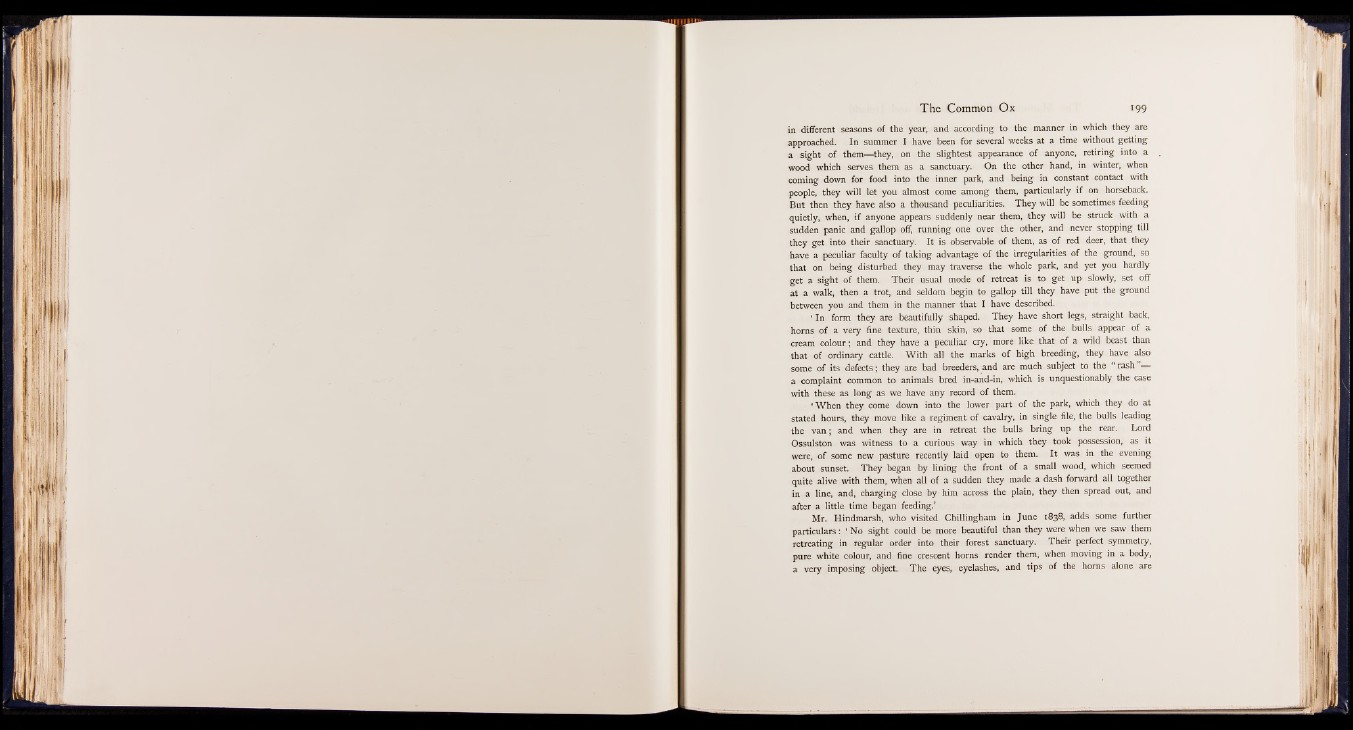
in different seasons of the year, and according to the manner in which they are
approached. In summer I have been for several weeks at a time without getting
a sight of them— they, on the slightest appearance of anyone, retiring into a
wood which serves them as a sanctuary. On the other hand, in winter, when
coming down for food into the inner park, and being in constant contact with
people, they will let you almost come among them, particularly if on horseback.
But then they have also a thousand peculiarities. They will be sometimes feeding
quietly, when, if anyone appears suddenly near them, they will be struck with a
sudden panic and gallop off, running one over the other, and never stopping till
they get into their sanctuary. It is observable of them, as of red deer, that they
have a peculiar faculty of taking advantage of the irregularities of the ground, so
that on being disturbed they may traverse the whole park, and yet you hardly
get a sight of them. Their usual mode of retreat is to get up slowly, set off
at a walk, then a trot, and seldom begin to gallop till they have put the ground
between you and them in the manner that I have described.
‘ In form they are beautifully shaped. They have short legs, straight back,
horns of a very fine texture, thin skin, so that some of the bulls appear of a
cream colour; and they have a peculiar cry, more like that of a wild beast than
that of ordinary cattle. With all the marks of high breeding, they have also
some of its defects; they are bad breeders, and are much subject to the 44 rash
a complaint common to animals bred in-and-in, which is unquestionably the case
with these as long as we have any record of them.
4 When they come down into the lower part of the park, which they do at
stated hours, they move like a regiment of cavalry, in single file, the bulls leading
the v an ; and when they are in retreat the bulls bring up the rear. Lord
Ossulston was witness to a curious way in which they took possession, as it
were, of some new pasture recently laid open to them. It was in the evening
about sunset. They began by lining the front of a small wood, which seemed
quite alive with them, when all of a sudden they made a dash forward all together
in a line, and, charging close by him across the plain, they then spread out, and
after a little time began feeding.’
Mr. Hindmarsh, who visited Chillingham in June 1838, adds some further
particulars: 4 No sight could be more beautiful than they were when we saw them
retreating in regular order into their forest sanctuary. Their perfect symmetry,
pure white colour, and fine crescent horns render them, when moving in a body,
a very imposing object. The eyes, eyelashes, and tips of the horns alone are